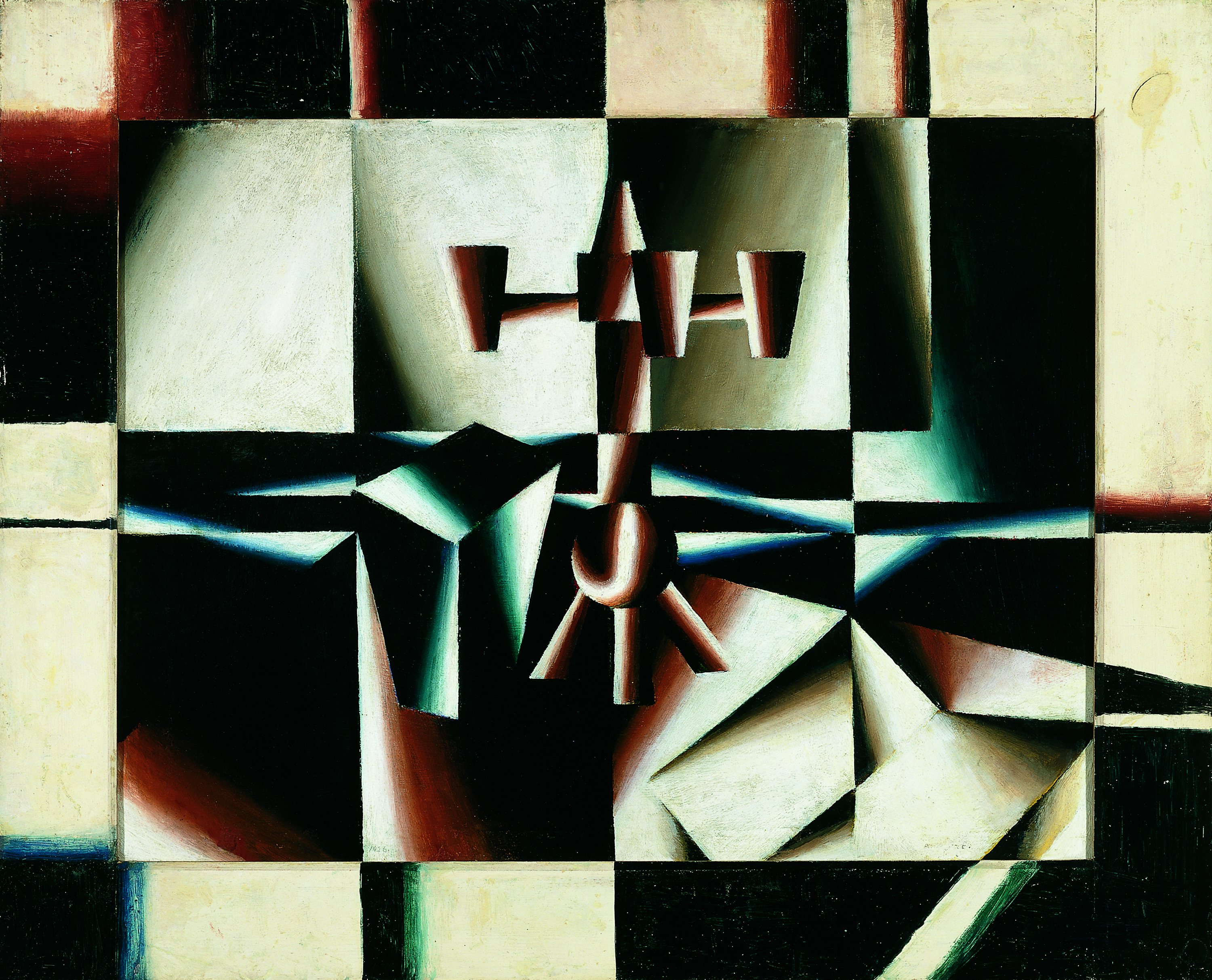Still-Life with Candle-Holder and Box
This work, which was exhibited in Berlin in a special section of the Novembergruppe exhibition of 1925, together with eleven other paintings by the same artist, was considered finished in 1926, the year when Segal signed and dated it. The image, which corresponds to the definition of "prismatic painting", developed by Segal at the height of his artistic career, is organised around the regular division of the surfaces into eight rectangular fields and the emphasis on the transversal and longitudinal axes, which counterbalance each other. Each of the fields shows a different relationship between light and shade and, in some cases, a highly complex volume, produced by secant planes with independent sources of lighting or, at least, subjected to different refractions. The painted frame, on which the lines and colours of the central image are continued, is visually integrated into the painting itself. The two subjects which give the work its title, a candelabrum without candles-with three legs and three visible arms, and with a structure based on essential stereometric forms-and a parallelepiped, take up the central area of the painting, even sharing the same central axis on which the pole of the candelabrum is placed, but they do not predominate over the rest of the composition.
The candelabrum, as well as the box, appears to be lit by different sources of light not affecting each other. The shading of each of its parts is independent from the others. With regard to the box, the different visible sides of the parallelogram also have their own shading, not determined by the same lighting. This chiaroscuro solution, which affects all the parts of the painting, eliminates the hierarchical dependency of the relations of the volume with a dominating source of light, and applies a system of equality between the different parts of the image in the development of the chiaroscuro. The law of equality of values applied by the painter establishes the need that each of the three basic elements of painting (chiaroscuro, colour and form) be given equal treatment in the work, in other words, that none of them should dominate the others. The composition should also do away with the hierarchic subordination of the different parts. The systematising formulas of the "prismatic image" which, according to its maker, is "the prismatic irradiation of forms and colours", are strongly linked to Goethe's study on the theory of colour and to the idea of perceiving reality as if through a prism, that is, like the multiple whole which represents the formal organisation of light in its refracting process. But of great importance is Segal's attempt to define a way of representing objects which maintains as far as possible an analogy with the structure of the cosmos, in which everything has the same value and, not least, which respects the social principle of equality. In this sense, the painting contributes, with the equalitarian form of its construction, to the ideal of social harmony.
Segal's highly reduced palette presents shades obtained by mixing white and black with three colours which are by no means primary, although they are similar: (brownish) red, (cobalt) blue and (olive) yellow. In this way the painting also acts as a symbol of the totality of the spectrum. The prismatic appearance of the image cannot be attributed to the structure of the painting's surface, which is fundamentally a grid of uncut orthogonal lines, but rather to a multiplicity of foreshortenings and sources of lighting which show the components of that grid. The refractions do not break the regular structure of a painting easily identifiable with a crystalline construction, with a refraction instrument.
The rhythm of the forms and chromatic transitions extends itself, in a coherent systematisation, to the painted frame, which becomes only a rise or a margin in the crystalline structure created. The frame does not act as the limit of an autonomous space, but as the margin of the painting, affected by the same law of formation, which is centrifugal. The elimination of the frame or the integration of the frame into the image, using it as an extension of the painting itself, had been a recurring device in Segal's work since 1917, and one which affected especially his "prismatic" works. Instead of being used to isolate the painting, the frame helps to dissolve its limits. It is not a mere formal addition, but an extension of the elements of the painting outside its own realm.
Javier Arnaldo





